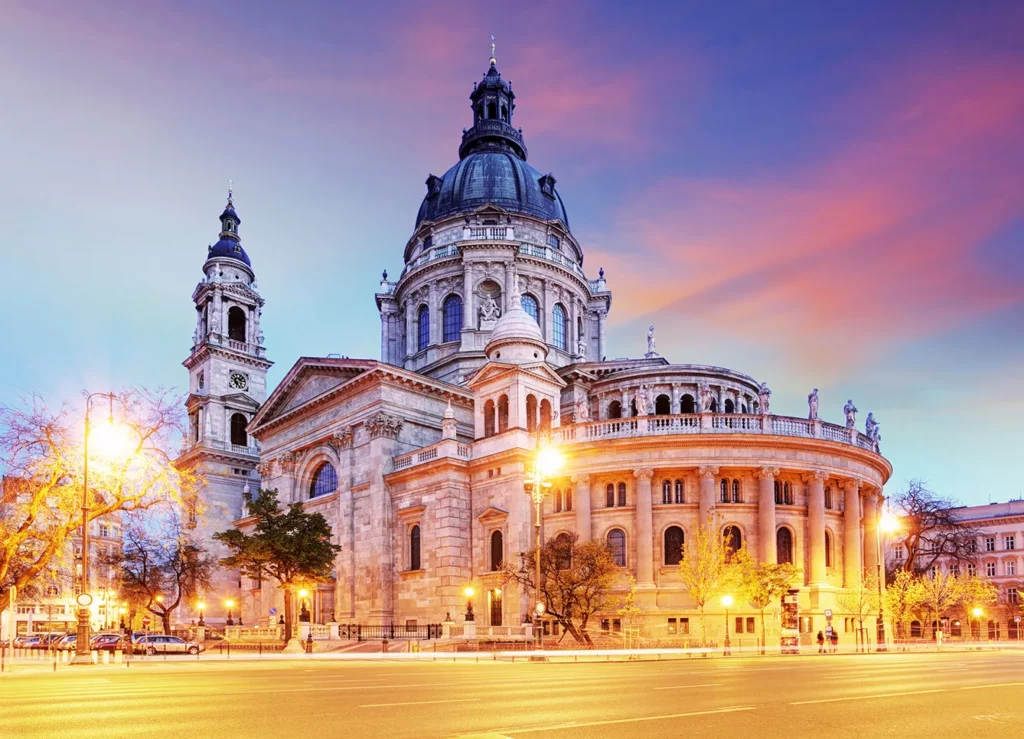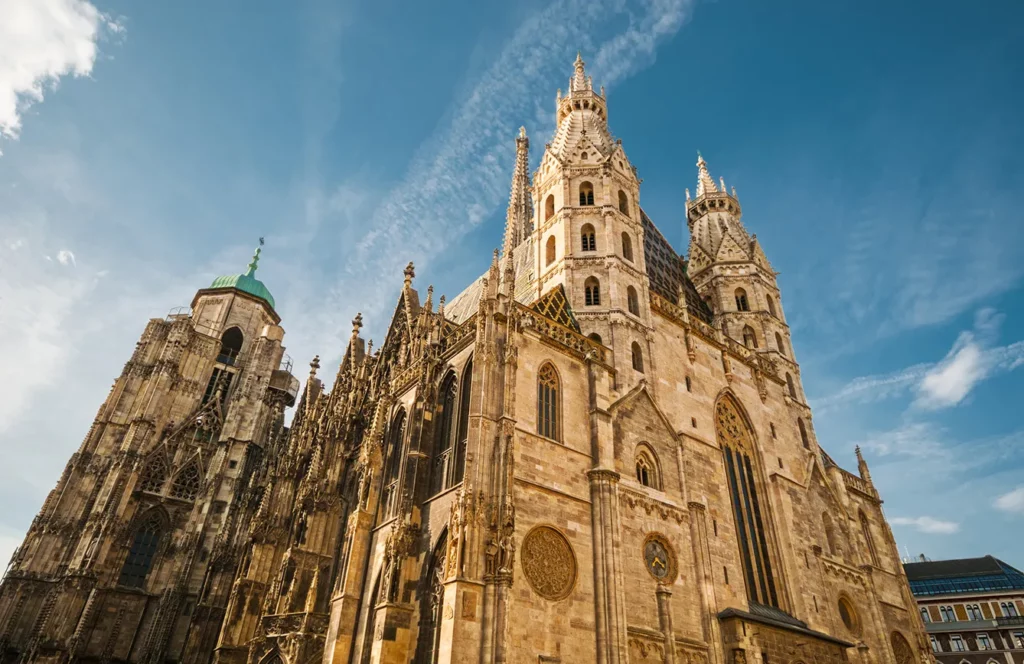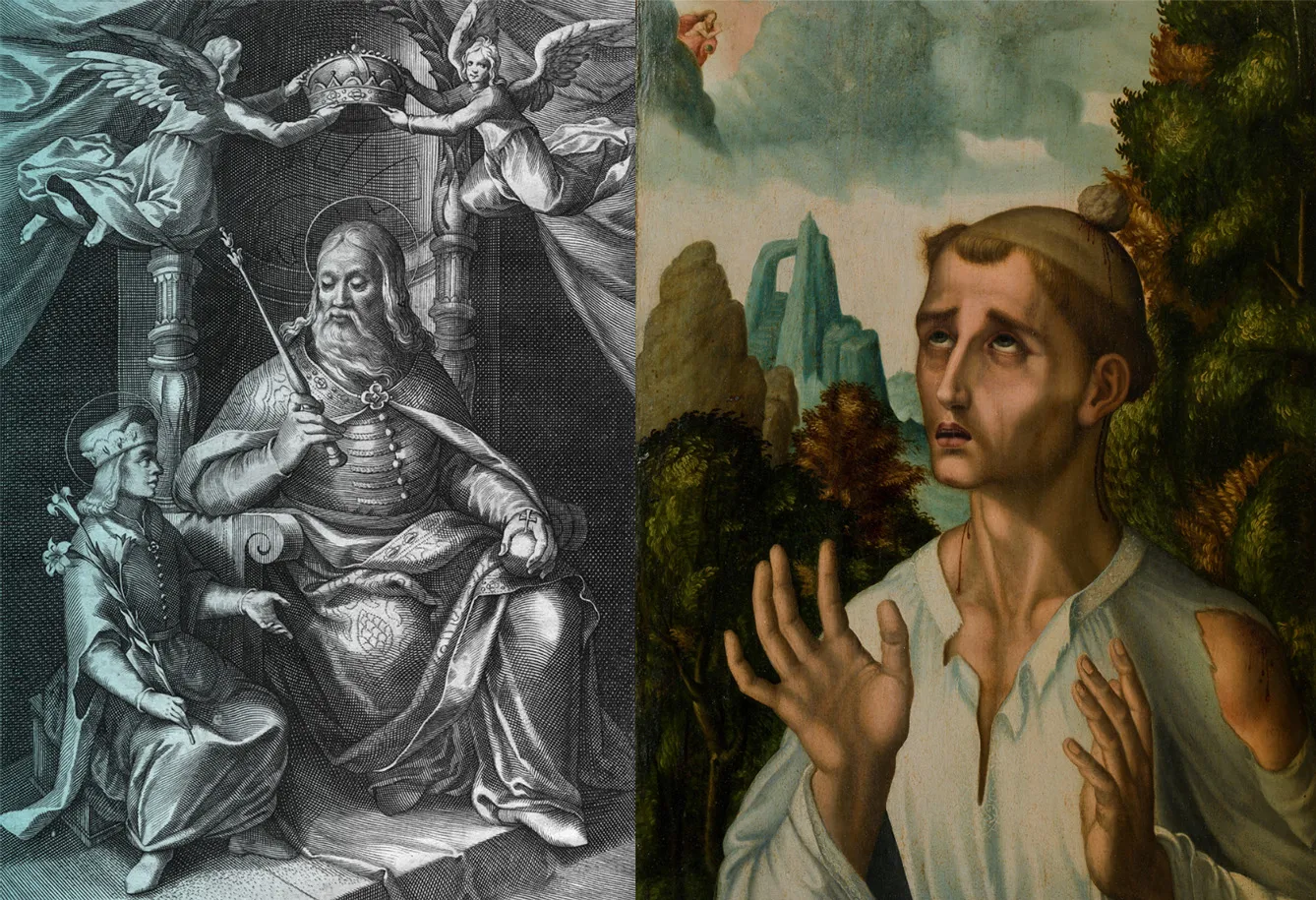Visit Vienna’s old town (seriously, if you haven’t yet, do it!) and right there, in the middle, there is Stephansdom, or Saint Stephen’s Cathedral. Rightfully the source of pride for what is perhaps the most Central European capital of them all, this medieval church is an architectural gem. Its construction started in the 14th century. It is equipped with four towers and no less than twenty-two bells. It houses numerous sculptures, paintings, and artifacts worth at least a few hours of your time.
After completing the tour, go to one other Central European capital – Budapest, also crowned by Saint Stephen Basilica. The third tallest building in all of Hungary, it is much younger than its Viennese sibling – completed only in 1905. To give credit where it is due: it could have been built a few decades earlier, but the 1848 European revolts halted the construction.


The Two Saint Stephens
Now, here’s the thing. Two European capitals, one right next to the other – only two hundred kilometers apart. Moreover, these are THE two capitals of what was technically one country, the Austro-Hungarian Habsburg Empire. Two main churches in these two main cities, both named after Saint Stephen. But here’s the catch: these are two Stephens, who are, in fact, so different that in some countries, they use different names.
Vienna’s Saint Stephen, the first martyr
Late medieval Austria could already afford a fancy Romanesque-Gothic church, but admittedly it wasn’t yet considered a superstar among the European states. Casting for a patron saint for Vienna’s most important temple included all the saints of Medieval Europe. And it was won by Saint Stephen the First Martyr.
As Jesus’s Apostle, he spread the word of his deeds and was granted the power to perform miracles. But as his efforts met resistance, he was caught and stoned to death in Jerusalem, as described in Acts of the Apostles.
Being the first of the long line of Christian martyrs, he is kind of a patron of them all. He is also so important for Christianity that the day commemorating him is December 26th, the day after the actual Christmas (in most Central European countries, the second day of its observance). Important saint for an important church. Easy, right? Now, to Budapest.
Saint Stephen of Budapest: the Hungarian king
But, as Saint Stephen the Martyr was popular, his name had a life of its own, with many people of the Christian world baptized as one. And one such man was born under the pagan name of Vajk to Hungarian Grand Prince Geza. Vajk was later (not sure when) baptized and assumed the name of Stephen. Though his parents were technically Christian, Stephen was the first to be a truly devout Christian.
Apart from that, he was also a clever ruler. Married to the scion of the Saxon dynasty that ruled the Holy Roman Empire at the time, he managed to become an independent king – got his own crown from the Roman Pope and assumed his duties in 1000 or 1001 AD. The next four decades in Hungarian history are the decades of King Stephen the Great. And less than fifty years after his death, along with his son Emeric, he was canonized and became a saint.
What’s in a name?
One name, two entirely different stories: a devout ideological martyr and a successful politician. This explains why, although geographically, two saint Stephen cathedrals may be close in temporal relations, they’re all but.
Look at the symbols: assuming the martyr as a patron is a sign of political devotion. But choosing the wise king from the nation’s history? In the 19th century, Hungary was a part of the super-national political entity, the Habsburg empire. After mid-century turmoil, it got its autonomy to the extent that the country’s name changed from the Austrian to the Austrian-Hungarian Empire.
And the official name of the “Hungarian” part, usually called Transleithania, was Lands of the Crown of Saint Stephen. In the 19th century, it was kind of a geopolitical term. After all, when nations were forming, the ethnic and language divisions got more and more visible.
The clever use of allusion to a Hungarian hero could effectively blur the fact that Transleithania was far more than Hungary itself. In today’s terms, it’s also Croatia, Slovenia, Bosnia and Herzegovina, Slovakia, Romania, parts of Poland, and Ukraine, to name just a few.
The two Stephens
And some languages still remember not to confuse both – though some facts get lost in translation. Poles could sometimes call the Stephansdom in Vienna “Katedra świętego Stefana,” though Stefan is, for them, only the Hungarian Stephen. The Jewish one, celebrated in Austria, is Szczepan.
The same goes for Russians, who call the martyr “Stefan” while the Hungarian king “Ishtvan.” The Germans hint at seeing the difference, calling the former Stephanus and the latter just Stephan. And although Hungarians seem indifferent as far as the name is concerned, one of the Stephens is very much theirs and can serve as a major point in the discussion on the origins of the European nations.







